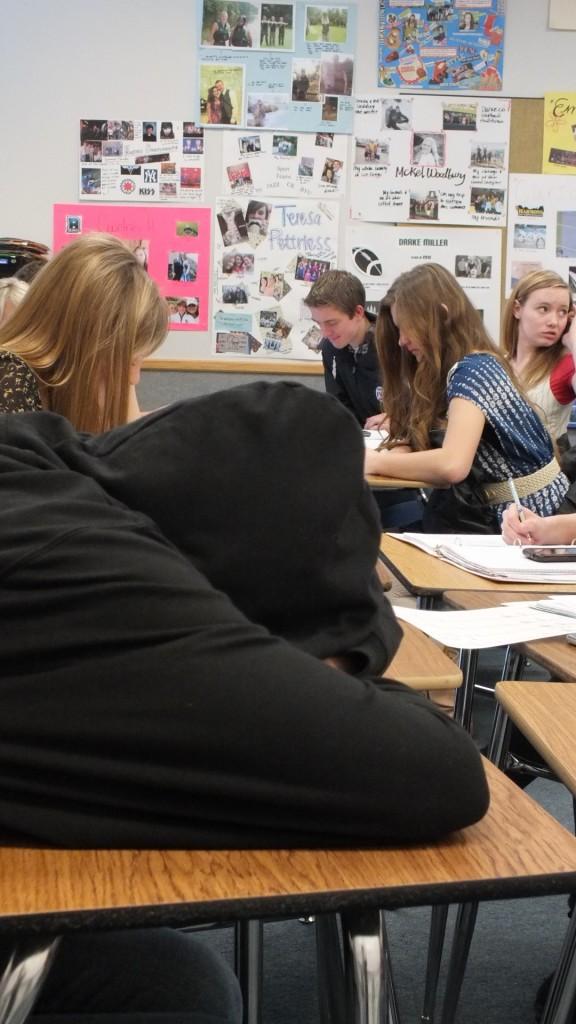Everyone has seen a movie when a character takes a fall or gets hit and someone comments, “That’s going to leave a mark.” What everyone may not realize, though, is that it does not always take physical injury to leave a mark.
Seventh grade began as a rough year for a young boy. He faced an entirely new environment with new classes and new people. Soon after he began to face all this, he started being pestered and teased. Kids called him names and taunted him. He became a victim of serious bullying. He reported it and started receiving counseling on a regular basis, trying to overcome the effects it had on him.
By the ninth grade, he still faced the same problem. Constantly being subjected to rude comments, teasing, and bullying, caused him to suffer from depression and low self-esteem. Unable to cope any longer, he took a gun from a locked safe at his house and commited suicide after school one day. The then 14-year-old boy, David Phan, shot himself on a skywalk bridge near Bennion Middle School on November 11, 2012.
“I was just walking. I heard a big sound and everybody yelling and then turned around and I saw it and there was a lot of blood,” Ethan Wiley, a student near the scene, told Fox 13.
Maheta Wily told Fox 13 that she wasn’t surprised that Phan took his life because he had been the victim of bullying for years.
“I kind of did feel it coming but I didn’t know it would go that far,” she said.
Bullying has serious consequences that are not always taken into consideration. Not only are there serious effects on the victim, like in David Phan’s case, but there are effects on the bully and studentbody as well.
According to the Minnesota Elementary Principals Association, everyone in a bullying situation is affected. Bullied students can have physical symptoms of headaches, inability to concentrate, and sleeping trouble. They can also face mental effects such as low self-esteem, depression, and violent behavior. Serious situations can result in students lashing out violently and even in a shooting at school.
The students who bully also develop problems as a result. Several studies show that such students who bully are more likely to vandalize, steal, fight, do drugs, perform poorly in school, and carry weapons.
Overall, if bullying becomes a large issue for a school, it can impact everyone. Students may face a very hazardous environment and could even be unwilling to attend. According to the National Education Association, 160,000 students nationally miss school each day for fear of being attacked or intimidated by other students.
Dr. Clinton Thurgood, Bingham’s school psychologist, says that Bingham does not have a serious bullying problem. “From what I’ve seen, we do pretty good. It’s more of people going back and forth at each other, swearing and screaming. People feel like they’re the victim, even though they participated,” he said.
Not all bullying at Bingham is detected, however. Recent Bingham graduate Kaitlin Hall recalls being made fun of as she walked through the hall. “I just remember feeling alone and hating school. I had thoughts of hurting myself and almost did at one point.”
Some students have been victims of cyberbullying through social networks. Senior Erin Dority recently posted a picture on Facebook that another student reposted on Twitter in an attempt to make fun of her. “I was called ‘desperate’ and a ‘skank,’” she said, “[The person bullying] had no intention of apologizing until they were called out for being rude.”
Bullying harms people and whether physical or mental, it always leaves a mark. “With things like this, you can either let it bring you down or build you up. We all need fixing,” Erin Dority said.
Dr. Thurgood claims bystanders are the most important people in a bully situation. “If people stepped in, it wouldn’t happen as much,” he said.
Feel free to leave a comment and give us your feedback. Have you ever been the victim of bullying? We want to hear your story.


![Photo Credit; Miller, Kim. “City of Asheville prepares for a weekend of winter weather.” City of Asheville prepares for a weekend of winter weather [Ashville], 10 February 2023, https://www.ashevillenc.gov/news/city-of-asheville-prepares-for-a-weekend-of-winter-weather/. Accessed 06 January 2025.](https://binghamprospector.org/wp-content/uploads/2025/01/Screenshot-2025-01-14-7.54.38-AM.png)


